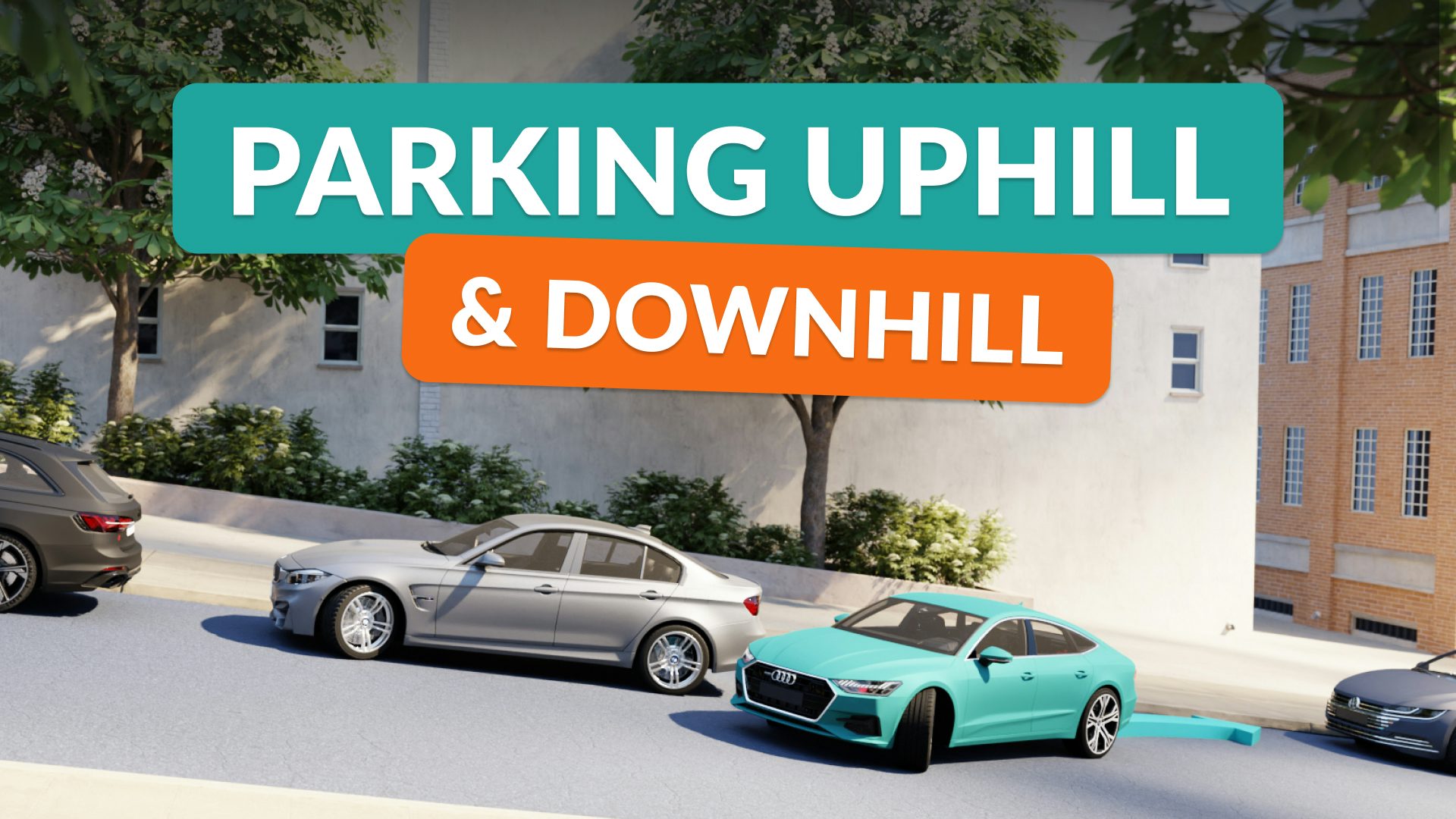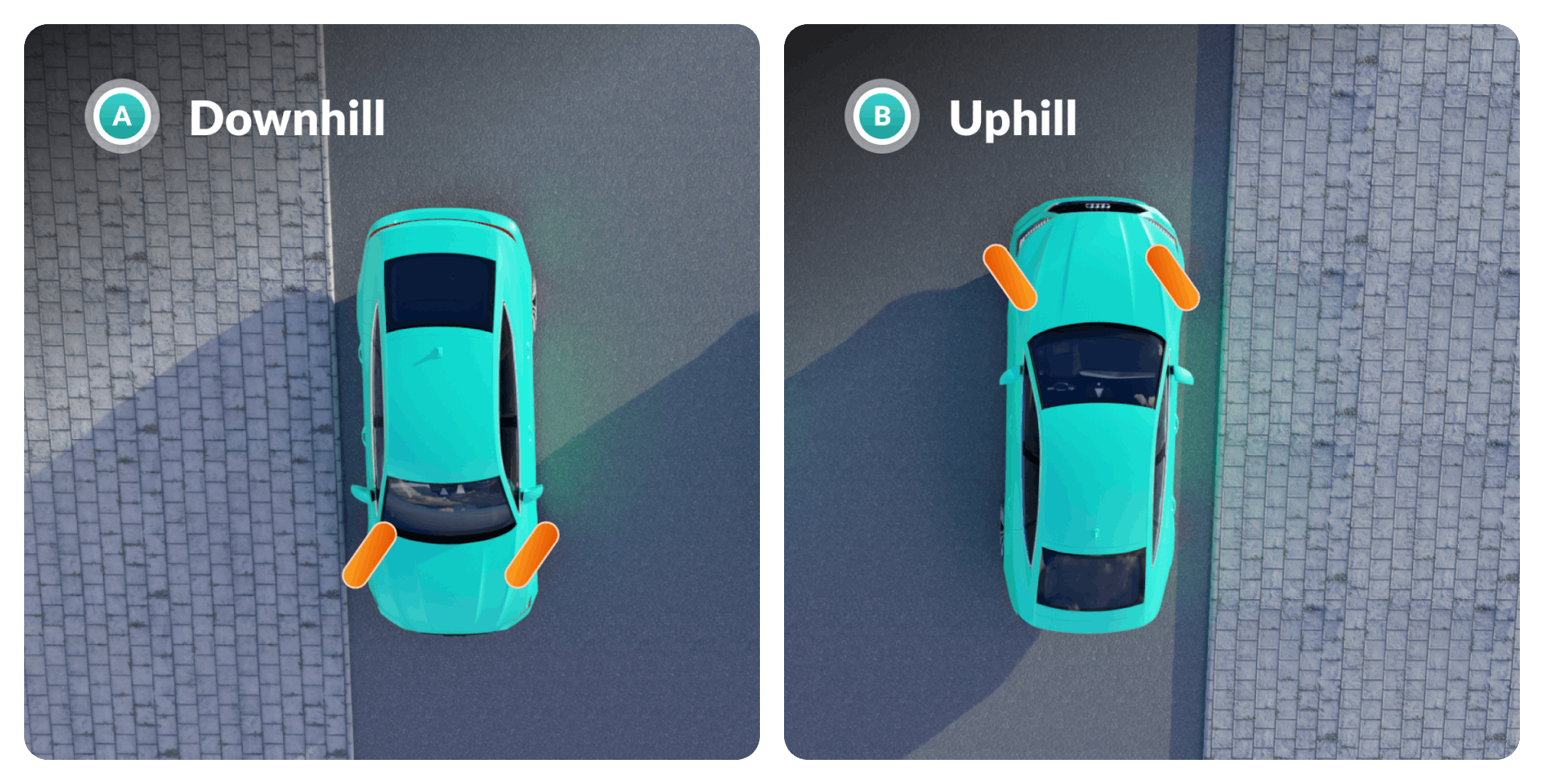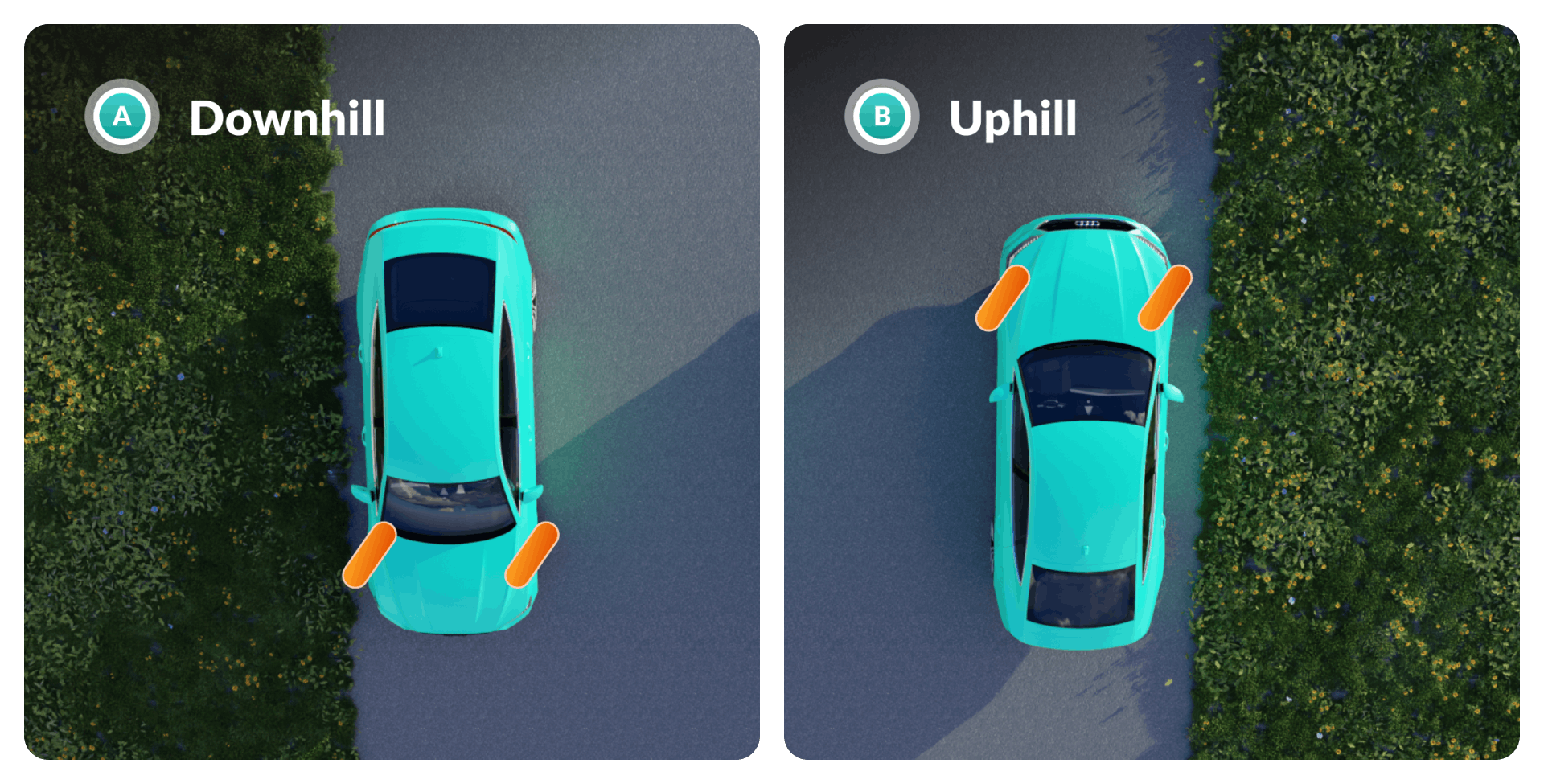
Parking on a Hill: How to Park Uphill and Downhill
This guide covers the rules for uphill and downhill parking in a clear and simple way, along with common mistakes drivers make that can lead to serious consequences.
Parking on a Hill With a Curb
On roads with a curb, the way you turn your wheels depends on whether you’re parking uphill or downhill.
- If you’re parking downhill, turn your steering wheel toward the curb. Allow your vehicle to roll slowly until the front tire lightly touches the curb, which acts as an extra barrier to help prevent your vehicle from rolling if something unexpected occurs.
- If you drive a manual, leave the gear in reverse. If you drive an automatic, shift into park.
- If you’re parking uphill, turn your steering wheel away from the curb and let your vehicle roll back to touch the curb gently.
- If you drive a manual, leave the gear in first. If you drive an automatic, shift into park.

Parking on Hills Without a Curb
If there is no curb or the curb isn’t high enough to stop your vehicle if it starts to roll, the wheels must be turned to the right so your vehicle will roll away from traffic (i.e. roll “off the road”) in case of brake failure. This applies to both uphill and downhill parking.

Which Gear Should You Use?
Automatic cars should be in park.
Manual transmission cars should be in 1st gear when parked uphill and reverse gear when parked downhill. You can think of the correct gear being the gear that points “up the slope”.
Common Mistakes
- Improper Wheel Alignment. Always double check so you’ve turned the wheels in the correct direction.
- When parking uphill with a curb, turn them away from it.
- When parking downhill, turn them toward the curb.
- If there’s no curb, always direct your wheels to the right so the car rolls off the road if brakes fail.
- Neglecting the Parking Brake. Not setting the parking brake can allow your car to roll unexpectedly. Always engage it. Also, this eases stress on your transmission and reduces wear.
- Overlooking Traffic Safety. Before exiting, check your mirrors and blind spots to ensure you won’t open your door into oncoming traffic.
- Incorrect Gear Selection. In manual cars, use first gear for uphill parking and reverse for downhill. Automatics should be in park.
Checklist for Parking on a Hill
- Does the road have a curb?
- Are you parked uphill or downhill?
- Are the wheels positioned correctly?
- Will the vehicle roll into traffic or off the road in case of brake failure?
- Is the car in the correct gear, i.e. does it point “up the slope”?
- Have you activated the parking brake?
That’s it!
If you’re learning to drive, our behind-the-wheel course is your fast track to driving confidence and success. Featuring professional online driving lessons, easy-to-follow step-by-step guides, parent training resources for effective at-home practice, and immersive virtual driving simulations, you’ll gain real-world skills in a risk-free environment. It is used by driving schools and students alike for better results.

Avoid beginner mistakes with expert advice
Build road test confidence and reduce anxiety
Make at-home lessons a success with our parent guide
Recommended articles
Ace your DMV test, guaranteed
Want to Be the Top School in Your Area?
- Simple & automated admin
- More time for teaching
- #1 learning materials for students


